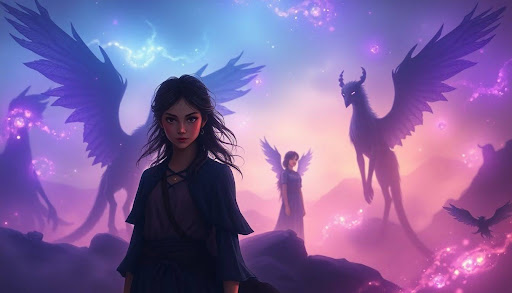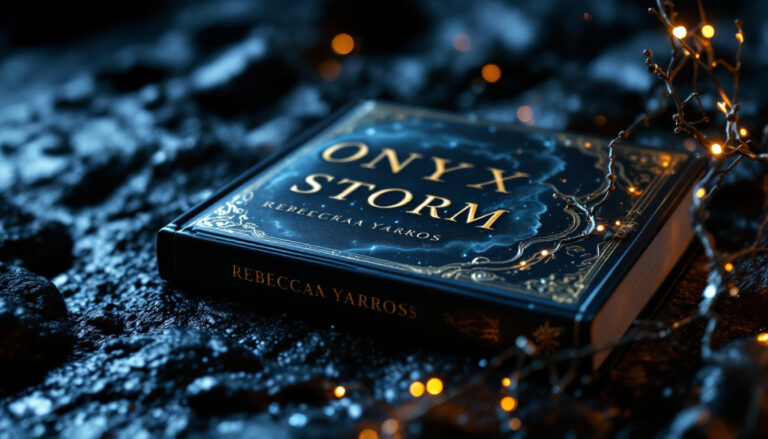Night of the Living Dummy by R.L. Stine – A Spooky Book Review
R.L. Stine’s Night of the Living Dummy kicks off a spooky adventure within the beloved Goosebumps series. This tale revolves around twin sisters Lindy and Kris, whose rivalry turns sinister when they each get their own ventriloquist dummy. The idea of dummies coming to life isn’t just creepy; it sparks a deliciously unsettling tension between the sisters.
As their competition escalates, so do the mysterious and eerie events surrounding the two dummies, Slappy and Mr. Wood. Is it just a prank, or is there something more sinister at play? This book not only entertains with spooky moments but also explores themes of sibling rivalry that many readers can relate to, making it perfect for young readers and those new to the world of books.
Join us as we dive deeper into this classic story and uncover what makes Night of the Living Dummy a memorable addition to the Goosebumps series.
Overview of the Book
Night of the Living Dummy is a thrilling addition to R.L. Stine’s Goosebumps series that combines humor, sibling rivalry, and just the right amount of spooky chaos. The story revolves around twin sisters, Lindy and Kris, who are as different as night and day. Their playful rivalry takes a creepy turn when they each acquire a ventriloquist dummy, leading to unexpected and eerie events.
Main Characters
The heart of this story lies in the dynamic between Lindy and Kris.
- Lindy is the more outgoing and adventurous of the two, often taking the lead in their playful antics. She has a knack for finding trouble, like her discovery of Slappy, the ventriloquist dummy that complicates things between the sisters. Her confidence sometimes borders on arrogance, which can rub Kris the wrong way.
- Kris, on the other hand, is more reserved and sensitive. She admires her sister but also feels the weight of the rivalry. When Lindy finds Slappy, Kris is engulfed in feelings of jealousy, fearing that the dummy has stolen her sister’s attention.
Their contrasting personalities create a compelling narrative arc as they navigate the strange happenings associated with their dummies and their relationships with each other.
Plot Summary
The adventure kicks off when Lindy discovers a ventriloquist dummy, Slappy, in a dumpster. Eager to impress, she takes him home and begins to practice her ventriloquism. However, as strange coincidences start to happen, Slappy seems to have a mind of his own. Lindy’s playful antics quickly spiral into a creepy series of events that affect them both.
Kris, feeling sidelined, stumbles upon her own dummy, Mr. Wood. As the sisters’ rivalry intensifies, bizarre occurrences become increasingly sinister. Items go missing, creepy notes appear, and the dummies’ behavior grows more unsettling.
Will Lindy and Kris be able to solve the mystery behind their dummies before it’s too late? Or will the competition push them apart, leaving only chaos in its wake? This book keeps readers on the edge of their seats, mixing humor and horror in a fun, relatable way.
For a deeper dive into the characters and plot, check out Night of the Living Dummy | Goosebumps Wiki or read more about the book at Night of the Living Dummy Book Review – TheGeeksAttic.
Themes and Analysis
As we dive deeper into Night of the Living Dummy, it’s clear that it’s not just a spooky tale. The book cleverly intertwines themes that resonate with young readers. Two central themes stand out: sibling rivalry and the haunted dummy concept. These elements weave together a captivating narrative that keeps readers engaged.
Sibling Rivalry: Examine how the relationship between Lindy and Kris drives the story
Sibling rivalry takes center stage in this story, bringing a relatable tension to the narrative. Lindy and Kris, twin sisters, each possess distinct personalities that fuel their competition. Lindy’s boisterous nature contrasts sharply with Kris’s quieter, more sensitive demeanor. This difference not only amplifies the rivalry but also deepens the story’s emotional texture.
The competition starts innocently enough, yet it quickly escalates as both sisters strive to outdo one another. Their relationship is a rollercoaster of emotions, where jealousy simmers beneath playful banter. As Lindy introduces Slappy to their lives, Kris feels overshadowed and replaced. This feeling echoes a common experience, where one sibling often feels they are vying for the spotlight.
Rivalries can lead to deep emotional wounds, and R.L. Stine explores this aspect brilliantly. Readers will likely remember a time when they felt compared to their siblings. The stakes rise when jealousy transforms into a sinister threat. What began as fun quickly becomes dangerous, leaving readers wondering if sibling bonds can withstand such trials.
To explore more about sibling rivalries in literature, you can read about Fiction’s Greatest Sibling Rivalries or check out Popular Sibling Rivalry Books.
The Haunted Dummy Concept: Explore how the idea of a haunted ventriloquist dummy adds to the spooky elements
The concept of a haunted ventriloquist dummy is not just a thrilling plot device. It adds a layer of psychological horror that grips readers from start to finish. Dummies, often perceived as innocent children’s toys, take on a life of their own in this story. Slappy’s eerie transformation plays on our primal fears of inanimate objects coming to life.
In Night of the Living Dummy, Slappy embodies this fear. His cheeky grin and lifelike movements blur the lines between reality and imagination. As readers encounter his antics, they too wonder: is this just a trick, or is something darker at play? The suspense heightens, with each chapter drawing readers closer to the chilling truth behind the dummies.
The tension escalates not only through Slappy’s actions but also through the dynamic shifts between the sisters. As Kris discovers Mr. Wood, the stakes double. Their rivalry now takes on an eerie dimension as both dummies influence their owners in unsettling ways. This interplay between the characters and their dummies serves as a powerful metaphor for the challenges of navigating sibling relationships while facing external threats.
To understand more about haunted dummies, check out the history of creepy ventriloquist dolls on Weird Historian or the Demonic Dummy trope that encapsulates this genre’s appeal.
In conclusion, R.L. Stine’s exploration of sibling rivalry and the haunted dummy concept come together to create a compelling narrative in Night of the Living Dummy. This blend of relatable themes with supernatural elements invites readers to reflect on their relationships while keeping them on the edge of their seats.
Critical Reception
Night of the Living Dummy by R.L. Stine has sparked a wide range of responses from readers and critics alike. This section highlights the positive aspects that fans appreciate as well as the criticisms that have been commonly mentioned.
Positive Aspects
Many readers have enjoyed several key elements of Night of the Living Dummy. Here are some of the standout features:
- Engaging Characters: Readers often connect with the well-defined personalities of Lindy and Kris. Their relatable struggle with sibling rivalry resonates with many, making their story feel personal and engaging.
- Intriguing Plot: The unique premise involving a haunted ventriloquist dummy offers a fresh twist that keeps young readers on the edge of their seats. The mix of humor and horror is especially appealing for this age group.
- Nostalgic Charm: Many adult readers recognize Night of the Living Dummy as a childhood favorite. Its ability to evoke nostalgia adds to its charm, allowing former readers to revisit their youth with fondness.
- Strong Themes: The exploration of sibling dynamics is both entertaining and thought-provoking. Readers appreciate how the rivalry amplifies tension and drives the plot forward.
For an in-depth exploration of these positive aspects, check out Night of the Living Dummy Book Review – TheGeeksAttic and Review of “Night of the Living Dummy” by R. L. Stine | Bemm.
Criticisms
While the book has garnered much praise, it has not been without its critics. Common criticisms include:
- Pacing Issues: Some readers feel that the story drags in certain sections, making it less thrilling than it could be. This slower pacing can lead to moments where engagement wanes.
- Character Development: Critics often mention that the character arcs of Lindy and Kris could be more fleshed out. While their rivalry is entertaining, deeper exploration of their motivations and growth is desired.
- Predictability: A few reviews note that certain plot twists can feel predictable to seasoned readers, reducing the shock factor that horror stories typically strive for.
For more insights, check Ben Reviews – Goosebumps: Night of the Living Dummy or read further at Book Review: Night of the Living Dummy (Goosebumps #7).
The blend of both praise and criticism makes Night of the Living Dummy a compelling read, especially for those looking for a mix of fun and fright.
Nostalgia and Cultural Impact
The influence of R.L. Stine’s Night of the Living Dummy extends far beyond its pages. This book captures a sense of nostalgia that resonates with readers across generations. For those who grew up in the ’90s, the sight of Slappy the dummy evokes memories of late nights spent hiding under blankets, peering into the pages of Goosebumps novels. The cultural impact of this story is profound, acting as a rite of passage for many young readers. It’s not just a ghost story; it’s part of a shared memory.
Generational Perspective: Consider how modern readers view the book compared to its original audience
Today’s readers encounter Night of the Living Dummy through a different lens than when it first hit the shelves. Younger audiences, familiar with various forms of media, may find the pacing and style varied from what they’re used to. However, the core themes—competition, jealousy, and the eerie thrill of a haunted dummy—remain as relevant today as they were over two decades ago.
For those who were children when the book was released, reading it again can be a trip down memory lane. Finding comfort in familiar plots, they often relish the chance to introduce the story to a new generation. Many adult readers appreciate the humor combined with horror, seeing it as a perfect gateway for kids into literature. This nostalgia is celebrated on various platforms, where fans engage in conversations about Night of the Living Dummy and its impact on their childhood. For a deeper dive into this nostalgia factor, check out Goosebumps by R.L. Stine Nostalgia.
Comparison to the TV Adaptation: Touch on how the book differs from its TV counterpart and audience reactions
The Night of the Living Dummy television adaptation brought the story to life in a new format, reshaping how audiences connected with the characters. While the book offers detailed insights into the sisters’ emotions, the TV version emphasizes visual thrills. Slappy’s antics are brought to the screen with a sense of urgency and flair, providing a unique experience that loyal viewers appreciate.
However, fans often point out key differences. In the book, the psychological aspects of competition are more pronounced. The TV adaptation, while entertaining, can lack the depth found in Stine’s narrative. This has led to mixed reactions from audiences. Some viewers adore the fun, spooky storylines of the series, while others long for the nuances found in the written word. The contrast is a highlight for discussions among fans, especially on forums and social media. For more on the adaptations, you can explore Night of the Living Dummy II (TV episode) or read about the differences and audience impressions at Goosebumps TV Show Insights.
The dialogue surrounding both book and adaptation showcases a fascinating cultural exchange. Readers and viewers alike find value in each medium, keeping the spirit of Night of the Living Dummy alive across generations.
Summary and Final Thoughts
The Night of the Living Dummy by R.L. Stine stands as a classic in the Goosebumps series. Throughout the story, readers experience a mix of humor, sibling rivalry, and spine-tingling suspense. Lindy and Kris’s diverging personalities contribute significantly to both the narrative complexity and emotional depth of the tale. Their competitive spirit provides a relatable backdrop for many readers, balancing the fun of sibling antics with the eerie nature of their haunted dummies, Slappy and Mr. Wood.
Key Points
- Engaging Characters:
- Lindy and Kris are vividly drawn, each bringing a unique perspective to the story. Their rivalry is relatable, reflecting real-life sibling dynamics.
- Atmospheric Themes:
- The underlying themes of jealousy and competition resonate with readers. The haunted dummy concept becomes a powerful metaphor for their struggles.
- Nostalgic Appeal:
- The book captures the imagination of young readers while also appealing to adults who grew up with Goosebumps. The blend of humor with horror creates an inviting atmosphere for exploration.
- Cultural Impact:
- Stine’s work left a lasting mark on the genre, impacting both readers and the television adaptation. The legacy of Night of the Living Dummy continues to spark discussions and nostalgia in various circles.
As readers dive into Night of the Living Dummy, they not only enjoy a thrilling read but also reflect on their own sibling experiences. This balance of fun and fright ensures that the book remains a hit with both new and returning fans alike.
For further insights into the book, check out Night of the Living Dummy Book Review – TheGeeksAttic or Book Review: Night of the Living Dummy (Goosebumps #7).







